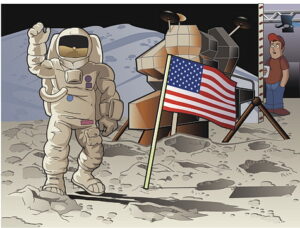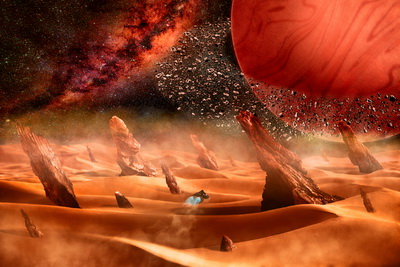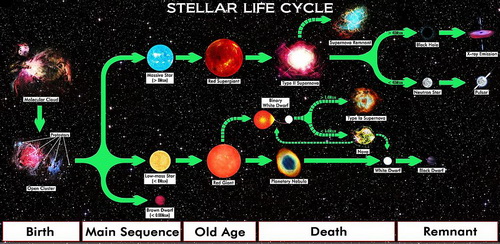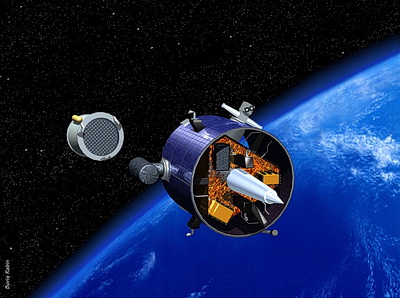
“There are space aliens among us“. “The CIA was involved in the JFK assassination“. “The US government was behind the 9/11 attacks“, and the conspiracy list goes on.
One that made national headlines was by conspiracy theorist talk show host Alex Jones who said that the tragedy at Sandy Hook Connecticut never happened. Alex Jones was sued for his statements, and maybe next time, he will think twice before purporting such statements.
So much for our shock and awe introduction, but let’s tone it down a bit and concentrate on one particular conspiracy theory. For this one, called the moon landing hoax, we are going to take this accusation and rip it apart, one by one. Not because we have to, but by showing how ridiculous these theories are, and hopefully, it will have a domino effect on those who continue to fall prey to these speculations.
“I Am Telling You! The Moon Landing Was a Hoax“
So they say that Neil Armstrong never set foot on the moon and that it was all staged in an unknown location on Earth, with cameras, and props located somewhere in the United States. They go as far as saying that the Disney company staged it in Hollywood.
Time to Debunk!
The Waving Flag

It is said that when the US flag was put on the moon, the photographs and videos show that it appeared to be moving. The moon has no air or wind, so some say that the landing must be on a Hollywood set and is completely fake.
There are currently six flags on the moon, from each successful moon landing. The flags are made out of nylon and are held up by four interlocking aluminum poles. These poles were designed by many engineers which resulted in a kit named The Lunar Flag Assembly.
Different soil and other aspects such as radiation from the sun needed to be researched to send up a functioning flag and flagpole. The original flag appears to be moving, because the top horizontal pole that holds up the top of the flag out, was not extended by the astronauts. This is why the flag looks rippled in photos and gives the illusion of movement in the NASA video. The flag only moves when it is acted upon and touched by the astronauts (inertia) or when a rocket blast blows by it.
Needless to say, if this was on a Hollywood set, it would be inside, so where is the wind? In addition, if this was such an elaborate hoax, does anyone think they would be that stupid to overlook such an obvious ‘fault’?
Two Shadows
In some photographs, there appear to be two shadows from the astronauts or the Lunar Module. This is easily explained.
Since the Earth is much larger than the moon, it casts a much greater reflection of light from the Sun. In doing so, another shadow appears, which is a direct result of Earth Light (concerning moonlight, but that light is much dimmer). The angle of the shadows is directly related to the time of day, the same as they would appear here on Earth; hence, two shadows appear.
Moon Dust
The way the dust flies from the Apollo 16 footage from NASA shows how the rover kicks up the dust. The dust forms a rooster tail, because of the low gravity environment and of no atmosphere on the moon.
This tail is a product of the lunar environment. Dust on the Earth cannot fly the way it does on the moon. This was confirmed by a study done by two scientists at the Laboratory for Atmospheric and Space Physics (LASP) at the University of Colorado in Boulder. Apollo 16 footage was turned into a mathematical formula that proved that if the dust on Earth was kicked up from a rover it would land very differently.

Enormous Effort
To discredit them further, one should consider the enormous work that would need to go into this, even if it was just a Hollywood set. A whole film crew would be required to make this ‘movie’, but it would not just be any movie, it would be a film designed to fool the entire world, including scientists, astronomers, and aeronautical engineers to name a few, and if it was run by the government, a certain amount of politicians as well.
This does not include the renting of the studio and all the bureaucracy that would go with it. In all, there would be no less than a few hundred people hired to fake this event. For so much equipment and so many people involved, why has no one come to speak out?
Yes We Were Really There
Besides the hundreds of people who would have been involved in the ‘Hollywood’ planning, the opposite is also true, as 400,000 NASA employees were hired to accomplish this amazing task some 50 years ago. They even brought back moon rocks!
It is also an insult to the amazing astronauts who have sacrificed their lives for our country, NASA, and the people of the world who live here.

There is such indisputable proof that we landed on the moon that it is almost impossible to say it was fake.
This author had the pleasure of meeting Buzz Aldren to discuss his amazing journey and looking back to 1969 when I was a young boy, I can vividly remember staying up with my father to watch this incredible feat of engineering and determination. It was real to us then and it is real to us now!

































